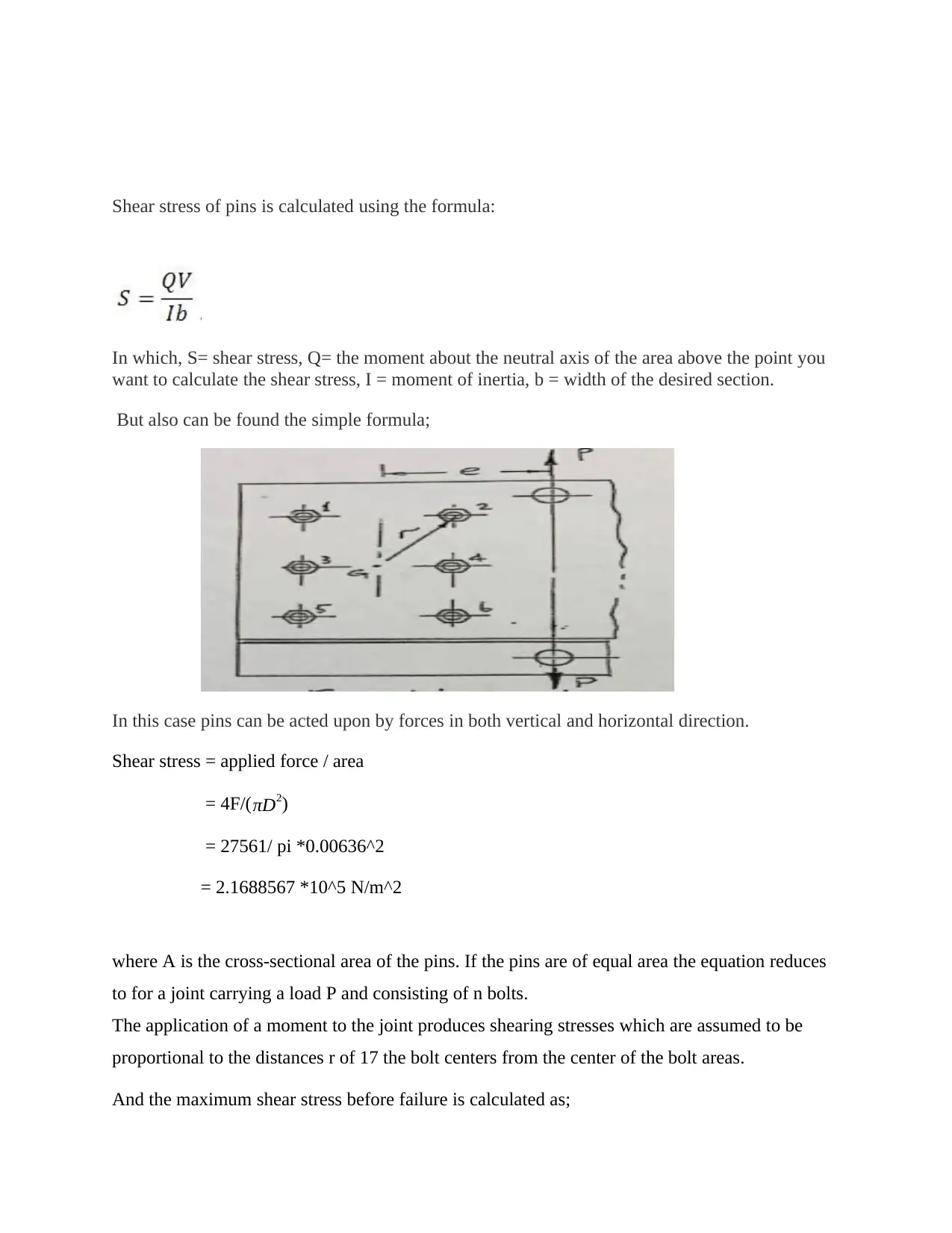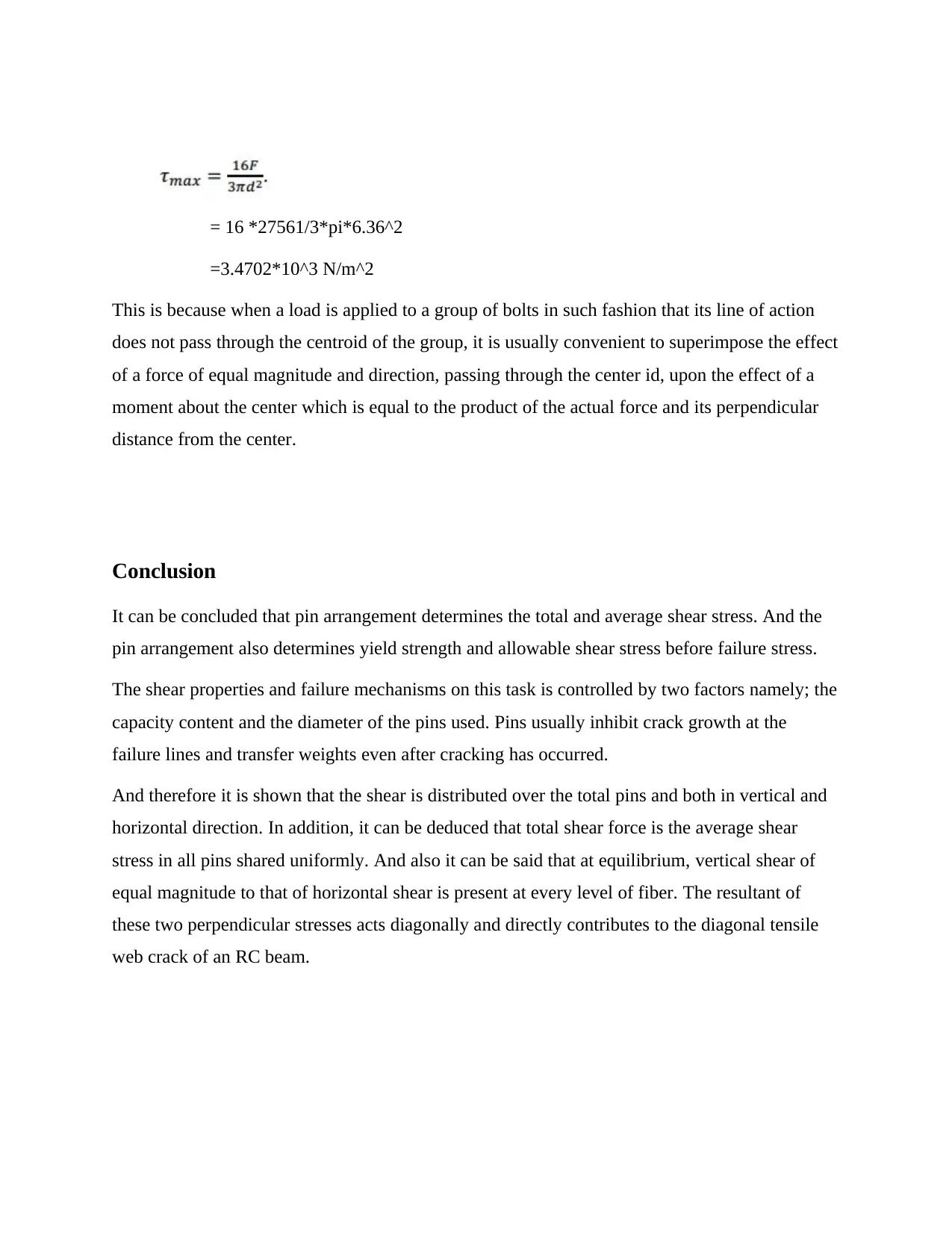Mechanical Engineering: Shear Force Calculation and Analysis Report
VerifiedAdded on 2022/11/24
|3
|527
|296
Report
AI Summary
This report provides a comprehensive analysis of shear forces, focusing on calculations and the impact of pin arrangements. It begins by calculating shear stress using the formula, considering both the applied force and the cross-sectional area of the pins. The report then examines the shear stress in a joint with multiple bolts and calculates the maximum shear stress before failure. The analysis considers the effects of both vertical and horizontal forces on the pins. The conclusion highlights how pin arrangements determine the total and average shear stress, the yield strength, and the allowable shear stress before failure. It also emphasizes the role of pin diameter and capacity in controlling shear properties and failure mechanisms. Finally, it discusses the distribution of shear across the pins and the equilibrium of vertical and horizontal shear forces, linking these concepts to the diagonal tensile web crack in an RC beam. This report provides a thorough understanding of shear force analysis in mechanical engineering.
1 out of 3





![[object Object]](/_next/static/media/star-bottom.7253800d.svg)